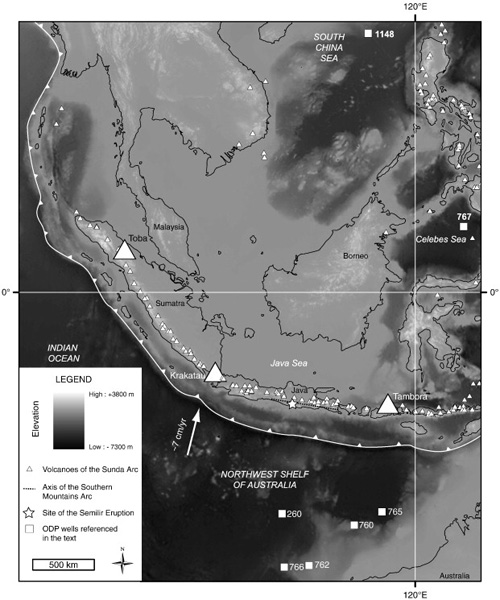TCD Geologist Discovers Ancient Major Volcanic Eruption in South East Asia
Posted on: 07 September 2011
A TCD geologist’s discovery of a pre-Pleistocene major volcanic eruption on Java in South East Asia has been recently published in the leading journal Lithos. The volcanic eruption, termed the Semilir Event, would have been large enough to have triggered a climatic response and influenced evolving ecosystems in the early Miocene, 20.7 million years ago.
Geologist, Dr Quentin Crowley at the School of Natural Sciences published the findings in collaboration with researchers from University of Cambridge, Bristol University, Royal Holloway University of London and Curtin University, Australia.
Although there is a long history of volcanic activity in South East Asia, this is the area’s oldest known major eruption. Indonesia is well known for spectacular volcanic activity, including the 1883 eruption of Krakatau, Java, the 1815 eruption of Tambora, Flores, and the Toba, Sumatra of 74,000 years ago. The newly discovered Semilir eruption was at a similar scale to that of Toba, but much older. New radiometric dating has placed the Semilir eruption at 20.7 million years ago.
The modern plate tectonic setting of Indonesia, shown on a Digital Elevation Model from SRTM (Shuttle Radar Topography Mission, NASA). The volcanoes of the Sunda Arc (small white triangles) and the locations of the eruptions of Toba, Krakatau and Tambora are indicated (large white triangles). The star marks the approximate position of the volcanic centre which produced the Semilir eruption.
Commenting on the discovery, Dr Quentin Crowley, Ussher Lecturer in Isotope Analysis and the Environment, said: “This study provides a robust and precise radiometric age for the oldest known major volcanic eruption on Java. We have determined from the geological record that the thickness of the Semilir eruption is at least that of the well known Toba Event. This is significant because the Toba eruption may have resulted in a ‘volcanic winter’, triggered climate deterioration and forced a bottleneck in human evolution at about 74,000 years ago.”
“With the Semilir Event we are looking much further back in Earth history to a time when several new ecological systems were being established. It is certainly possible that the Semilir Event would have produced an environmental effect of similar magnitude to that of the much younger Toba Event. The Miocene was a complex time geologically speaking and this paper highlights the importance of understanding the nature and timing of major volcanic eruptions in the study of climate change.”
The full paper is accessible via the following link: http://elib.tcd.ie/login?url=http://www.sciencedirect.com/science/article/pii/S0024493711002052
Title: A Toba-scale eruption in the Early Miocene: The Semilir eruption, East Java, Indonesia, LITHOS (2011), doi: 10.1016/j.lithos.2011.07.010
Authors: Smyth, Helen R., Crowley, Quentin G., Hall, Robert, Kinny, Peter D., Hamilton, P. Joseph, Schmidt, Daniela N., A Toba-scale eruption in the Early Miocene: The Semilir eruption, East Java, Indonesia, LITHOS (2011), doi: 10.1016/j.lithos.2011.07.010
